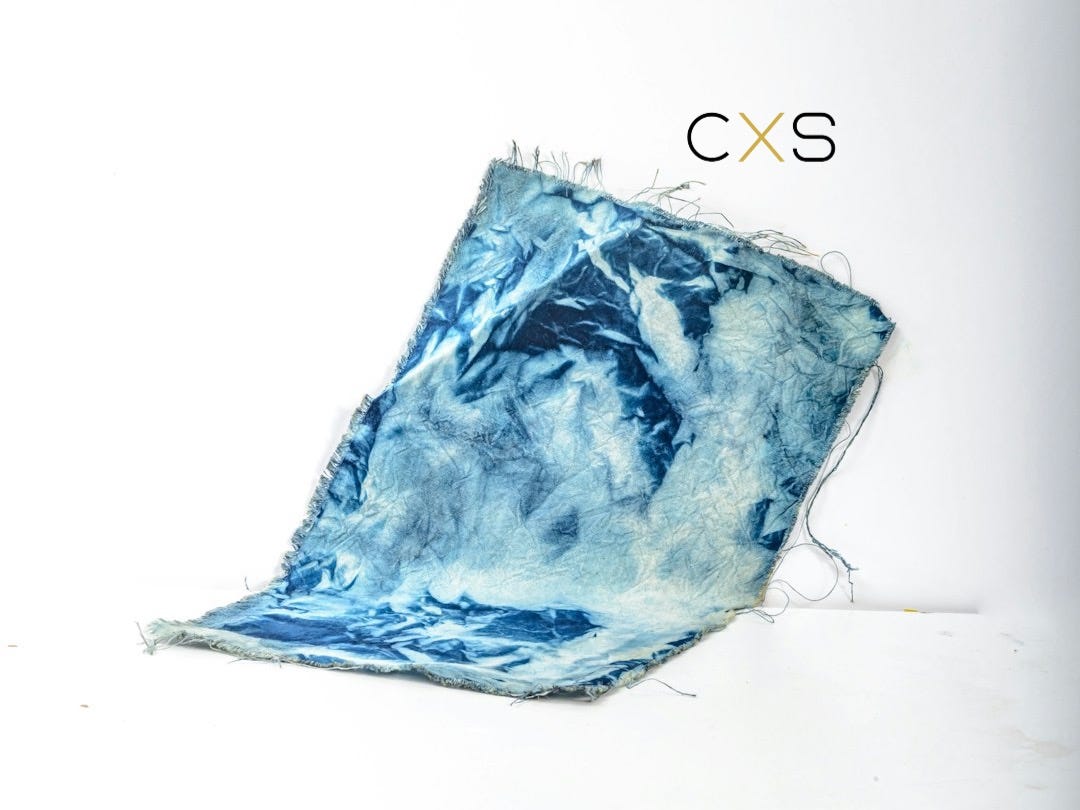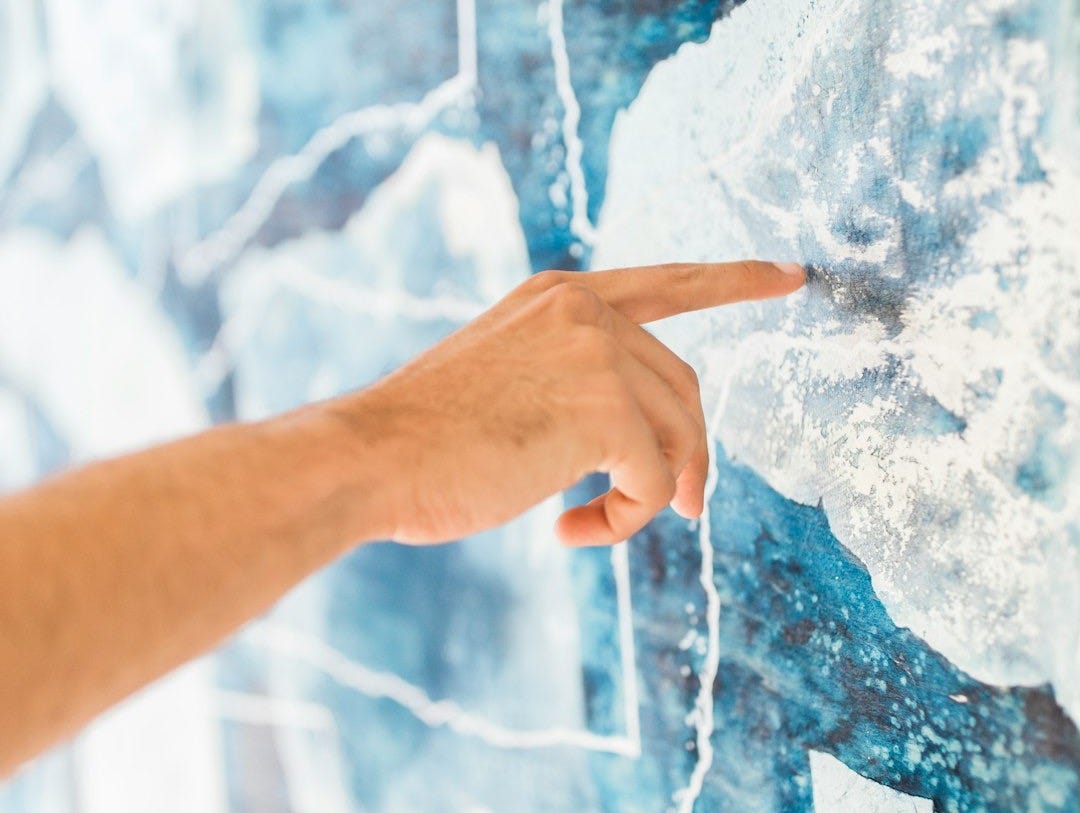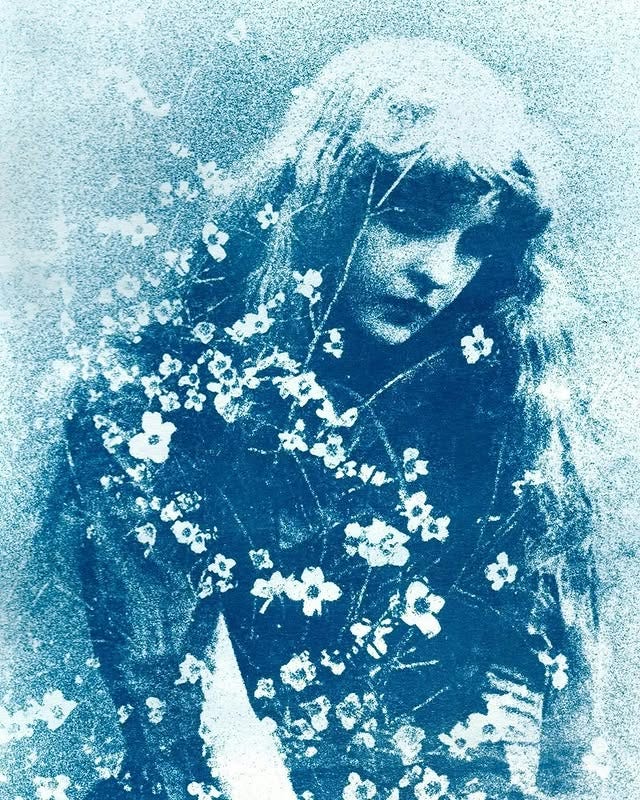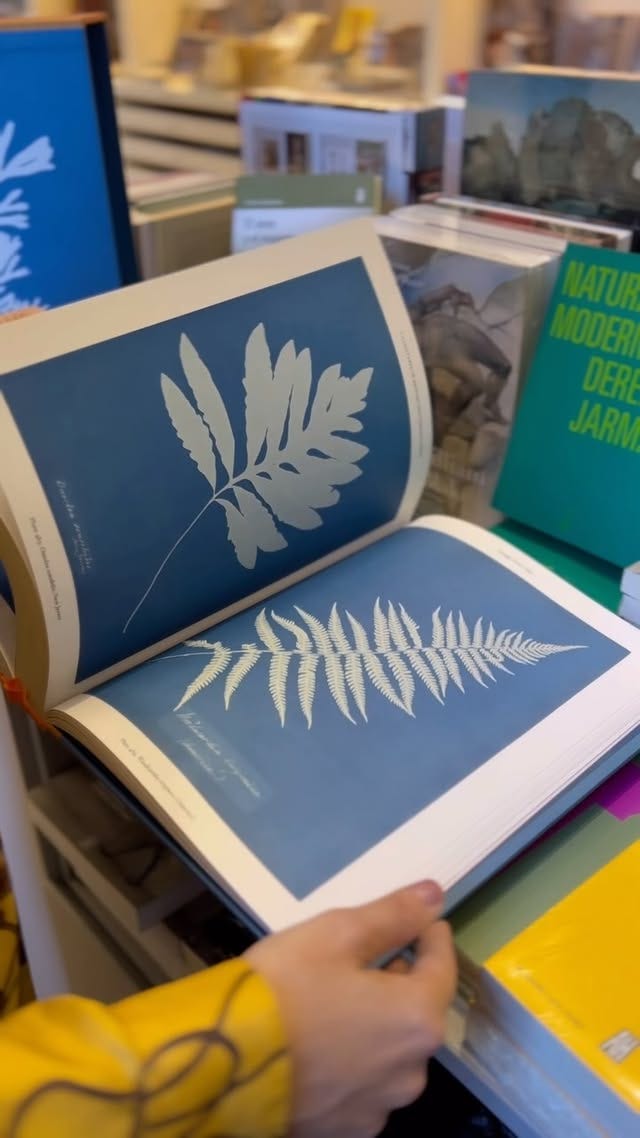La cianotipia y el arte de pintar con luz azul/Cyanotype and the Art of Painting with Blue Light
Tecnica | Technique
En una época donde las imágenes nacen y desaparecen en pantallas, la cianotipia ofrece un viaje más lento: crear fotografías con la luz solar. Inventada en 1842 por Sir John Herschel, este proceso utiliza una mezcla de citrato férrico amoniacal y ferricianuro potásico para producir un azul profundo conocido como azul de Prusia. No requiere cámaras, solo luz ultravioleta, objetos o negativos, y paciencia (es.wikipedia.org, kplma.org).

En 1843, la botánica británica Anna Atkins publicó Photographs of British Algae: Cyanotype Impressions, considerado el primer libro ilustrado con fotografías. Sus fotogramas —donde las algas marinas se colocaban directamente sobre papel sensibilizado— borraron la línea entre la ciencia y el arte (kplma.org).
Hoy en día, artistas visuales, fotógrafos alternativos y diseñadores textiles han adoptado la cianotipia para explorar nuevas narrativas visuales. Su accesibilidad —que solo requiere materiales básicos y luz natural— la convierte en una herramienta poderosa para la experimentación y la expresión creativa (sartle.com).
Más allá del proceso químico, la cianotipia es una experiencia: trabajar con el sol, medir el tiempo y aceptar que cada imagen será única.
»TIENES UN PROYECTO CREATIVO O ARTISTICO que te gustaría mostrar esto te interesa.«
Cómo iniciarte en la cianotipia
Materiales básicos: papel o tela, citrato férrico amoniacal + ferricianuro potásico, pincel, objetos o negativos, luz solar.
Proceso: aplicar la solución sobre la superficie, dejar secar, colocar objetos/negativos, exponer a la luz solar, enjuagar con agua hasta que aparezca el azul (es.wikipedia.org).
Tiempo de exposición: varía según la intensidad de la luz (generalmente minutos) (es.wikipedia.org).
El azul de Prusia que deja la cianotipia nos recuerda que la fotografía no siempre es instantánea. Que hay imágenes que respiran sobre el papel, y que a veces la creatividad mancha las manos… y las deja teñidas de azul.

Referencias
“Cianotipo,” Wikipedia. Visión general verificada del proceso, historia y química (es.wikipedia.org).
“Cyanotypes,” Kingston Public Library Local History Collections. Detalles sobre Herschel y el trabajo de Atkins (kplma.org).
“Art History Reader: Cyanotype,” Sartle. Perspectivas sobre la técnica, su resurgimiento y aplicaciones creativas (sartle.com).
Versión English
Cyanotype and the Art of Painting with Blue Light
Discover cyanotype, a handcrafted photographic technique that transforms sunlight into deep-blue images full of history and creativity.
In a time when images are born and vanish on screens, cyanotype offers a slower journey: creating photographs with sunlight. Invented in 1842 by Sir John Herschel, this process uses a mixture of ferric ammonium citrate and potassium ferricyanide to produce a deep blue known as Prussian blue. It requires no cameras—only ultraviolet light, objects or negatives, and patience .
In 1843, British botanist Anna Atkins published Photographs of British Algae: Cyanotype Impressions, considered the first book ever illustrated with photographs. Her photograms—where algae specimens were laid directly onto sensitized paper—blurred the line between science and art .
Today, visual artists, alternative photographers, and textile designers embrace cyanotype to explore new visual narratives. Its accessibility—requiring only basic materials and natural light—makes it a powerful tool for experimentation and creative expression .
Beyond the chemical process, cyanotype is an experience: working with the sun, measuring time, and accepting that each image will be unique.
Getting started with cyanotype
Basic materials: paper or fabric, ferric ammonium citrate + potassium ferricyanide, brush, objects or negatives, sunlight.
Process: coat the surface, let dry, place objects/negatives, expose to sunlight, rinse with water until the blue develops .
Exposure time: varies depending on light intensity (often minutes long) .
The Prussian blue of cyanotype reminds us that photography isn’t always instant. That some images breathe on paper, and that sometimes creativity stains your hands… and leaves them tinted in blue.



